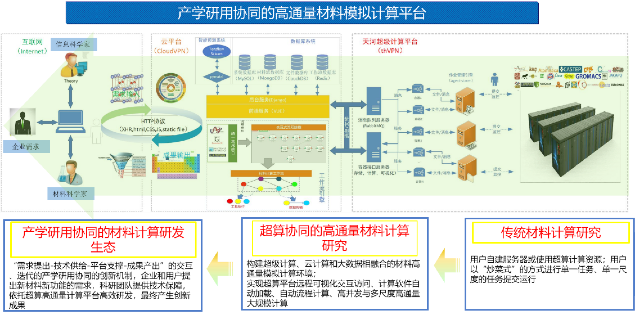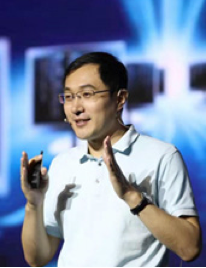CNMGE: the High-Throughput Computing Infrastructure for Materials Simulation and Big-Data Management
Geng Li, Xiangfei Meng*,Xiaodong Jian,Xiaoqian Zhu
National Supercomputer Center in Tianjin, Tianjin 300457, China
EXTENDED ABSTRACT: A high-throughput computing (HTC) infrastructure is the key to accelerate material discovery in the materials genome engineering. Several efforts has been devoted to build the HTC environment by computer and material researchers. The outstanding feature of these platforms is constructed by supercomputing systems combined with current high-efficiency materials research and development requirements, such as Materials Project based on NERSC, Automatic-Flow based on Cray, and NOMAD based on Barcelona Supercomputing Centre. National Supercomputer Center in Tianjin, the most famous supercomputer in China, constructed a HTC infrastructure for materials with the features of automatic workflow, high concurrency and multi-scale calculation, named as the computational platform of China Materials Genome Engineering (CNMGE).
CNMGE relies on the supercomputing platform and cloud service platform of the National Supercomputing Center in Tianjin, and integrates the cutting-edge computer technologies such as high-throughput computing, big-data management, remote visualization, and machine learning. We develop the high-throughput automatic-flow material computing system and the data application management system. The platform provides a complete set of automatic-flow simulation services from material modeling, software installation, parameter setting, job submitting and running, to results visualization. The platform currently implements 11 functions, including supercomputer resource and task management system, one-click installation software warehouse, one-click login to the Shell interface of the supercomputing system, interactive high-throughput computing, efficient supercomputing data management network Disk, crystal structure database and potential database, intelligently rapid prediction system of crystal properties, domestic independent software community, user sharing database, and data visualization module. It integrates 50 commonly used material simulation software and 11 material structure visualization software, constructs 11 material simulation workflows, and supports to run 1000 high-throughput jobs concurrently. The platform currently integrates the ALKEMIE integrated computing platform developed by the team of Professor Sun Zhimei from Beihang University, the high-throughput energetic materials screening platform named as EM-Studio developed by the team of Professor Zhang Chaoyang from China Academy of Engineering Physics, the molecular sieve software named as FraGen developed by the team of Professor Li Yi of Jilin University, and the thermoelectric software named as Perturbo developed by the team of Professor Zhou Jinjian from Beijing Institute of Technology.
In the process of the platform construction, the National Supercomputing Center in Tianjin has formed a set of informatization technology for material research and development. We will be committed to providing the safe and efficient supercomputing resource, big-data storage and visualization technology for scientific research institutions, enterprises and individuals. CNMGE is a national and open platform. It has set up the supercomputing resource reward mechanism and the free and open funds for young scientists to encourage the material calculation and the sharing of material software, data, and results. At the same time, we pay attention to the protection of intellectual property rights.

Figure 1 The framework of CNMGE

Mr. Xiangfei Meng, Ph.D., is a researcher senior engineer of National Supercomputing Center in Tianjin, director engineer of "Big Data Processing Technology and Application" Joint Laboratory of National Development and Reform Commission, member of the Standing Committee of CCF High Performance Computing Committee of China Computer Society, vice chairman of Intelligent Medical Branch of China Artificial Intelligence Society, and vice chairman of the tumor Artificial Intelligence Committee in China Anti-Cancer Association. He is responsible for the R&D and cooperation of the "Tianhe" series of supercomputers, and his research interests include high performance computing technology, supercomputing, big data and artificial intelligence fusion platform construction and application, etc. He has been awarded several provincial and ministerial-level first and second-class science and technology progress awards as the first and main finisher, and has been awarded as a special-posted expert of the State Council, China's May 4th Youth Medal, and a leading talent of Tianjin's 131 talent plan innovation team. He has presided over the National Thirteenth Five-Year Plan key R&D projects, the National Natural Science Foundation of China, and the National High-Tech Service Industry Project.